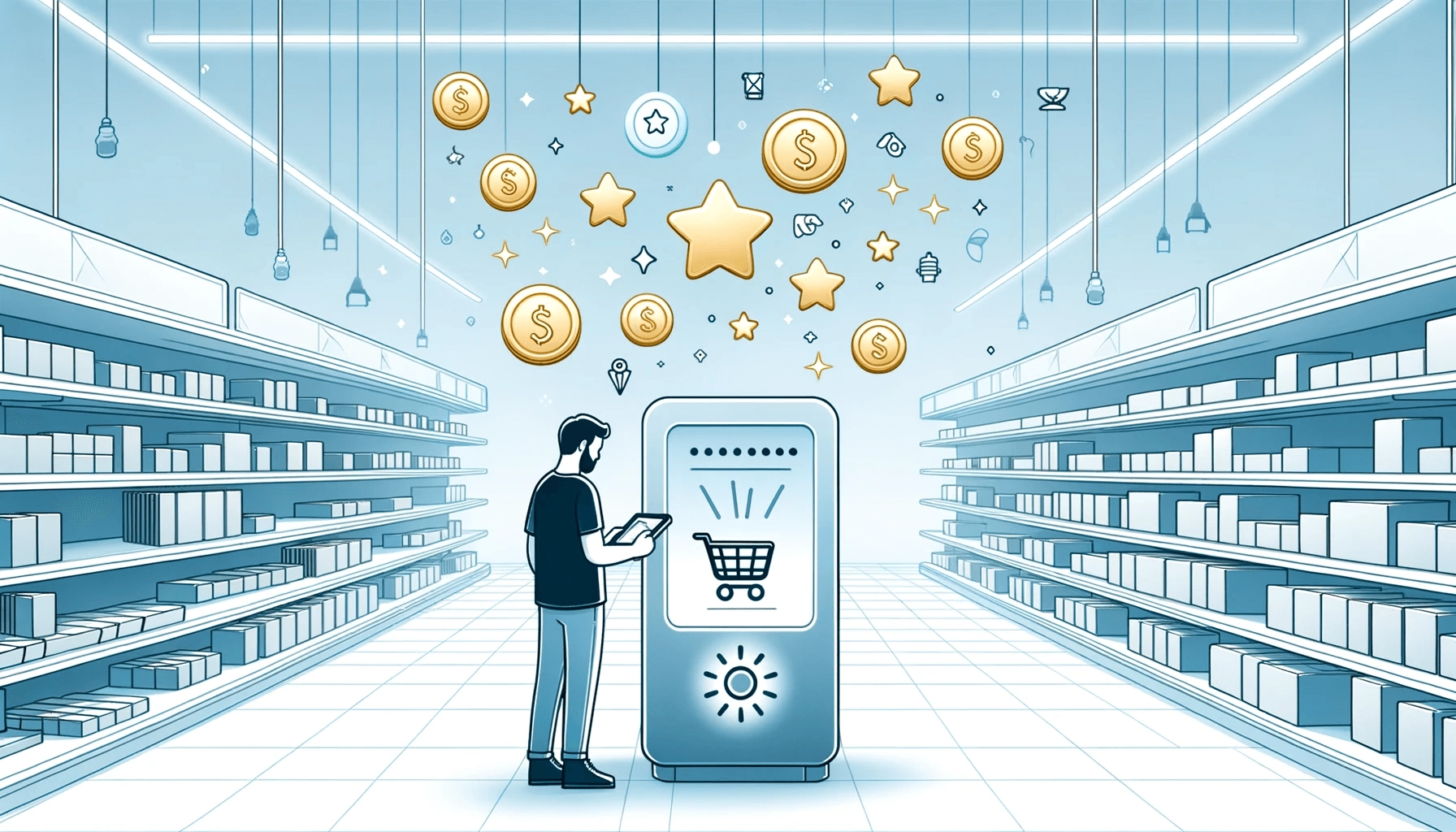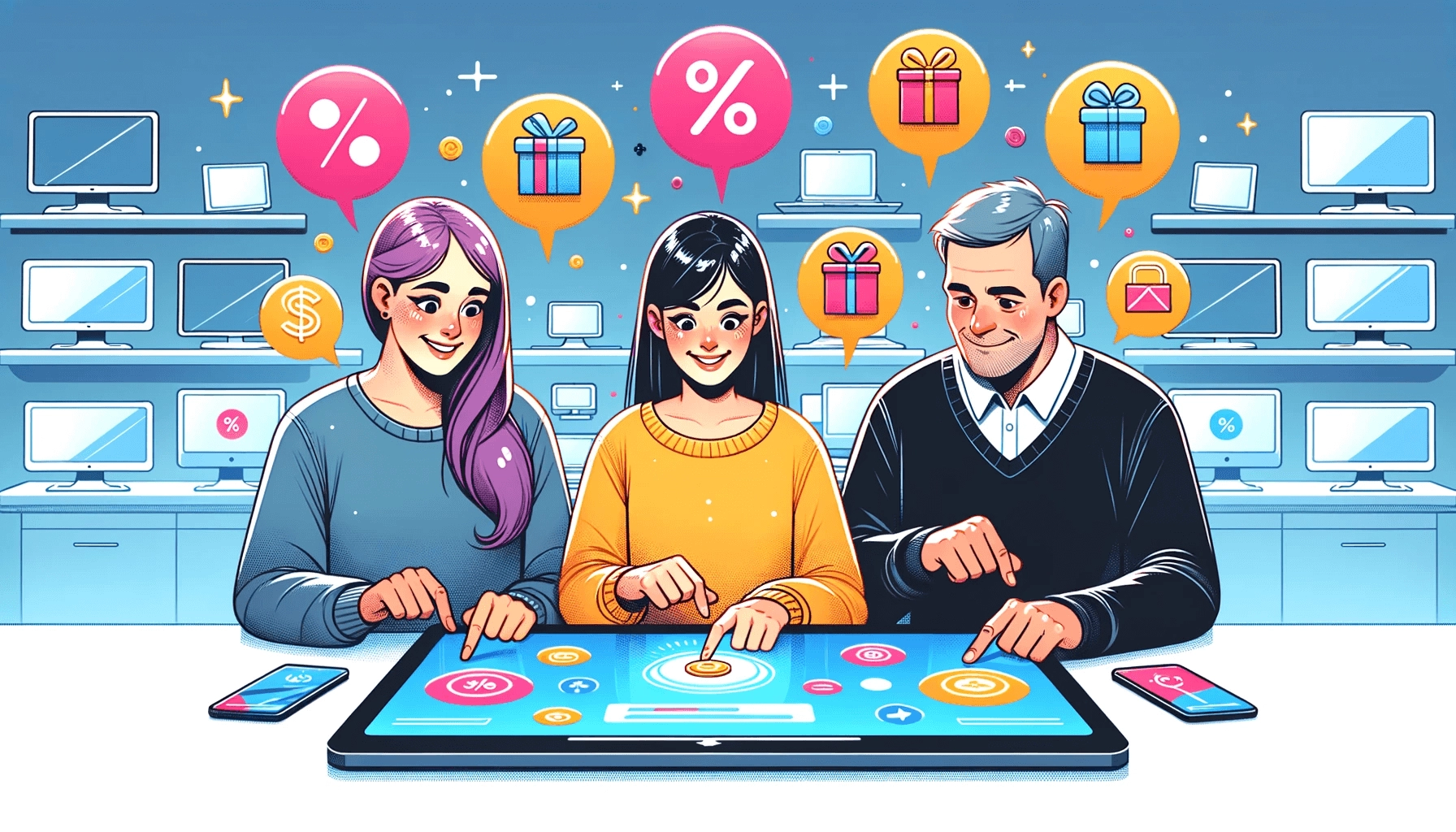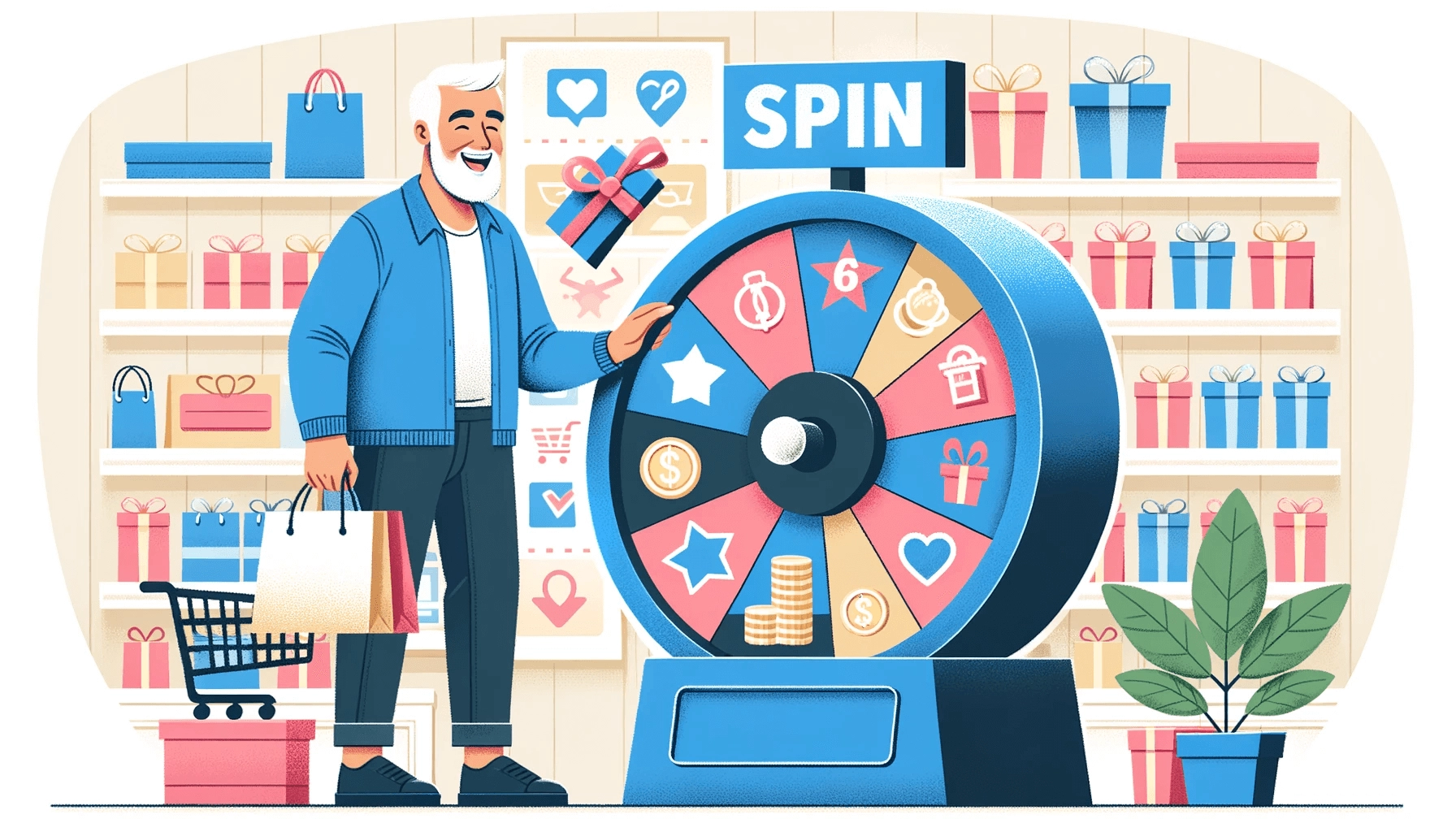Intuitively, we all know that games are fun, but what if you could use that insight to your advantage in retail? Well, you can! An increasing number of businesses have discovered plenty of value in blending gaming mechanics with marketing strategies. In turn, gamification in retail can help increase brand awareness, grow your customer base, and boost sales.
In this blog post, we’ll explore the ins and outs of retail gamification so you can implement it in your business. But first, let’s see what gamification is and why it is an important element in retail marketing strategies.
What is Gamification?
Simply put, gamification is applying game-like elements to non-game contexts to make them more fun and engaging. At its core, it involves creating games or challenges for customers to interact with, such as playing a simple game in the store for a prize. The prizes can be anything from free items to discounts. These types of game-like elements can encourage customers to make a purchase.

Many retailers offer loyalty programs to rev up sales and customer loyalty. For example, customers can collect tokens after each purchase and exchange them for discounts, free items, or samples.
Why is Gamification Important?
There are many reasons why you should invest in gamification, including:
- It helps boost customer acquisition and increase brand recognition. Gamification allows you to add more touchpoints and get to know your customers better. It captures customers’ attention and draws them into your brand’s ecosystem. Many companies have increased brand awareness by 30% after implementing game mechanics.
- It helps increase sales. Gamification trends have proven to increase sales for several companies. For instance, the American multinational software company boosted its trial usage by 40% after applying gamification elements.
- You can use it as a differentiator. Gamification can help you stand out among your competitors and showcase your company’s unique selling points. You can highlight the biggest advantages of your business, such as sustainable fashion, and deliver it to your customers in a fun and exciting way.
- For instance, the French luxury brand Kenzo launched a gamified e-shopping experience called “Shopping League” to highlight the exclusivity of its new limited edition Sonic sneakers. The game allowed customers to virtually defeat other players to gain access to the product, promoting interest in the shoes.
- It’s measurable. Gamification allows you to gain insight into adoption rates, engagement, and productivity. Tracking these measurements and comparing them to your customer retention and sales will show you how your marketing strategies pay off.
- It can also be used to improve your employees’ experiences. Although primarily intended to increase customer engagement, you can also use gameplay mechanics to enhance the engagement of your company’s most important asset – the employees. Leaderboards, rewards, and point-scoring games can motivate your employees to deliver better performance at the workplace.
Benefits of Gamification in Retail
A recent report shows the immense effect of retail gamification on performance. Here are some highlights from it:
- Gamification has helped increase total customer acquisition by about 700%.
- Major gamification programs by eBay, Walgreens, and other retailers helped increase customer engagement and loyalty by 30%.
- The retail industry holds the largest share of the gamification market.
In short, it’s a great way to engage with your customers and employees while increasing brand awareness and sales. Additionally, gamification can help you achieve a number of business goals, including: - Increasing customer engagement
- Creating a more personalized customer experience
- Driving sales
- Improving brand loyalty
- Building brand awareness
- Improving employee engagement
- Improving customer retention
- Improving employee retention
- Increasing referrals
- Increasing positive word-of-mouth
- Maximizing marketing ROI
Four Types of Games to Use in Your Retail Gamification Strategy
There are many different types of games that you can use as part of your gamification strategy, each with its unique benefits. Here are four strategies that can boost your customer acquisition and retention, as well as sales:
Knowledge Games
Knowledge games reward customers for what they know about your brand or products. For example, you may have an article about pet safety that you turn into a knowledge game by asking readers a series of questions about the topic. You can also use knowledge-based games as part of an event. For instance, you can host a quiz or trivia contest where users can win prizes for correct answers.
Casper’s new subway ads pose puzzles to get you thinking about going back to bed: https://t.co/f7pVrbcnYG pic.twitter.com/diRMkPQRRe
— AdFreak (@AdFreak) March 4, 2019
These types of games are a fantastic way to get people engaged with your content, as they don’t take much effort to play. They also encourage brand engagement, as you can ask users questions about your brand. Social media is a powerful tool you can use to bring the spotlight to your brand. You can host knowledge games on your Instagram and Facebook pages and encourage people to comment, share, or like to boost engagement online.
A mattress company called Casper applied one of the most creative knowledge games to attract customers. They placed ads all over the New York subway that contained riddles with no other context except for their logo. The answers to these riddles were all connected to the brand’s topic of a good night’s sleep. As a result, Casper’s brand awareness increased, which spiked its revenue by 40% and helped the company reach a $1.1 billion valuation just five years after its launch.
Collaboration Games
Collaboration games are built on user groups or teams and encourage people to work together toward a shared goal or challenge. You can also use collaboration games to spark creativity and incentivize people to get together and share ideas. They are also an excellent way to build a sense of community, as when people work together on a common goal or challenge, they begin to feel like a team.
One way of implementing collaboration games is by encouraging people to complete specific tasks or goals. When people collaborate and achieve something together, they will remember their accomplishments associated with your business. This automatically drives brand recognition and awareness.

Taobao, a Chinese online shopping platform, took advantage of the biggest shopping day in China, Single’s Day, to offer discounts through a collaborative online game. They developed a game where players built skyscrapers by inviting as many members to their teams as possible. In turn, more than 300 million people participated and won cash prizes and vouchers. As a result, Taobao’s engagement grew massively, leading to more sales.
Competition Games
Competition games pit your customers against each other. They are a perfect way to get users to share your game with their friends, as they will want to show off their wins.
You can use competition games both inside and outside of your store. Inside the store, you could use them to encourage more engagement around an existing feature or event. For example, you can create a competition around finding items on point-of-purchase displays in the store. Coca-Cola created a game in supermarkets in Beijing and Singapore where customers had to throw virtual ice cubes into a glass of Coke to receive Coca-Cola discounts and loyalty points.
You can also use competition games outside the store to drive user behavior. For instance, online competition games encourage users to complete specific tasks or goals on your website or app. For instance, the men’s apparel retail store Bonobos launched a digital scavenger hunt on its website. Customers were given clues to find specific images by browsing their site. The first 50 buyers to find the correct images received a $25 Bonobos credit and free shipping on their next purchase.
Reward Games
Reward games let users earn points or discounts for completing certain actions. These games are great for encouraging specific user behaviors, such as purchasing extra items.
A variety of companies integrate loyalty programs as reward games. For one, Starbucks Rewards allows customers to collect points from purchases they make at Starbucks, which they can later redeem for discounts or free menu items.

Lazada is another retailer that incorporates reward games into the shopping experience. One of these features is called “Slash It!” where customers are rewarded for getting as many of their friends to click their personalized promo link as possible. The company rewards shoppers in the form of discounts on particular items.
Tips on Implementing Gamification in Your Business
Gamification does help you attract new customers and increase your company’s conversion rate. However, some retailers may push it too far, leading to negative results. When it comes to implementing gamification in your business, these are a few tips that can help you craft the right campaign:
- Know when to stop. People are naturally competitive. But once achievements become easier to obtain, they lose their importance. If you give out free samples to everyone who can solve a simple math equation, you might draw people who are obsessed with collecting free samples instead of potentially loyal customers. Your customers should be proud of their achievements and rewards. If they return to make a purchase after being rewarded, that’s when your gamification really made an impact.
- Get creative but make it simple. There are multiple creative and fun challenges you can implement that would spark your buyers’ interest. But keep in mind not to make them too time-consuming and complex. Shoppers don’t want to spend an hour building a fort for a $10 discount. Gamification strategies in retail should be simple, eye-catching, and casual.
- Be careful with rewards. Rewards can be extrinsic (discounts or coupons) and intrinsic (induced emotional states). It’s up to you to choose which to offer for certain activities. But remember that extrinsic rewards don’t always guarantee long-term satisfaction and loyalty. In the long run, people mainly value and remember intrinsic emotions rather than possessions.
- Gamification isn’t only for boosting sales. Gamification in retail helps your organization in more ways than increasing revenue. While higher numbers are the end goal for every business, this shouldn’t be the only metric you track. Instead, track other measures, such as the conversion and repeat customer rates, which better reflect the impact of your gamification strategies. It’s also a great way to make onboarding and training more enjoyable for your employees.
Bottom Line
Retail gamification is a powerful way to engage customers, increase sales, and boost customer loyalty. It’s also a great way to engage your employees and increase productivity. However, it doesn’t always mean creating a new game or app from scratch. Different gamification examples in retail showed that even a simple loyalty program could be a powerful tool for catching your customers’ attention.


